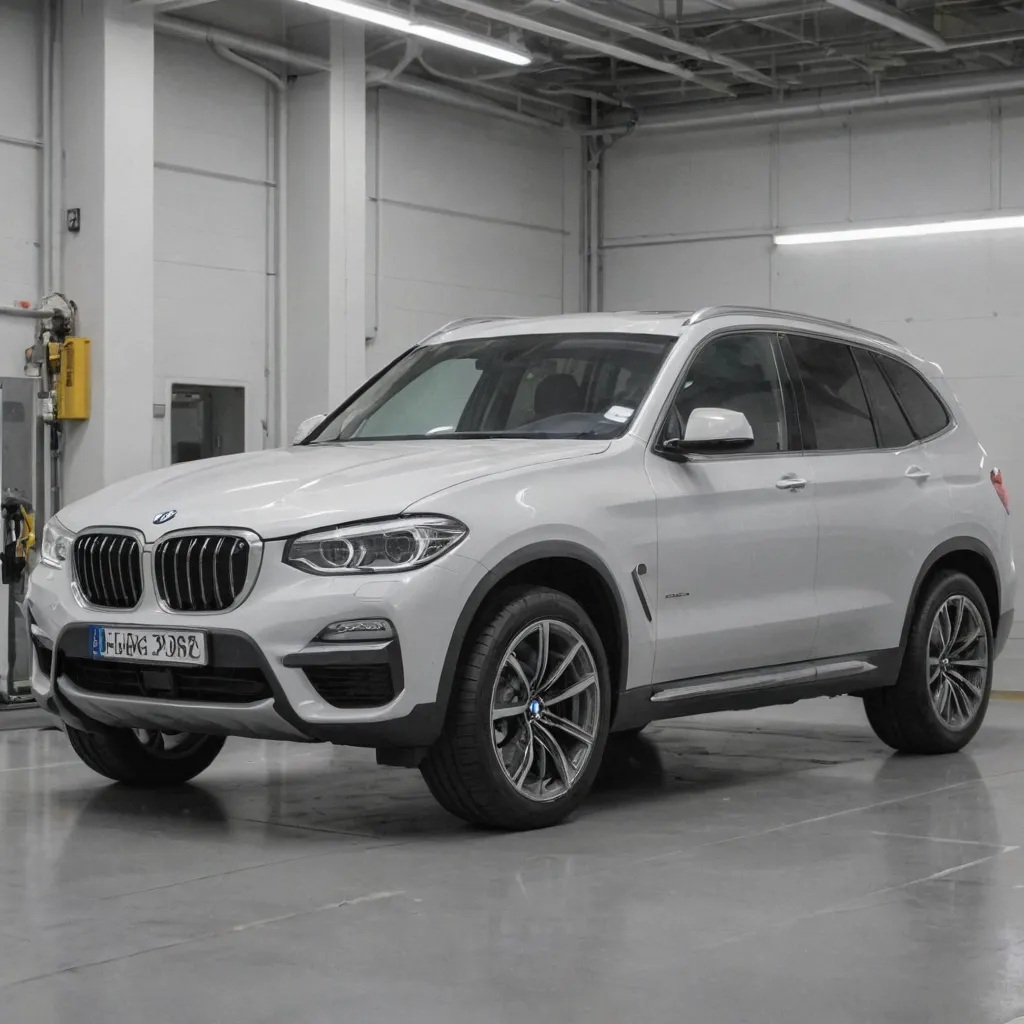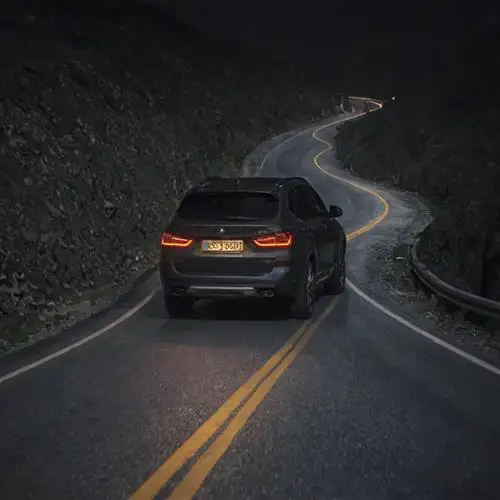
Advanced Safety Features of the BMW X3
The BMW X3 is a testament to the brand's commitment to safety and innovation. Its advanced safety features are designed to provide drivers with a secure and confident driving experience, even in the most challenging conditions. At the heart of the X3's safety prowess are its cutting-edge technologies, engineered to anticipate and respond to potential hazards before they become a problem.
One of the standout safety features of the BMW X3 is its comprehensive suite of driver assistance systems. The Collision Warning system, for example, uses radar and camera sensors to detect impending collisions and can automatically apply the brakes to mitigate the impact. The Lane Departure Warning system, on the other hand, monitors the vehicle's position within the lane and gently nudges the steering wheel to prevent unintentional lane drifts.
The BMW X3's advanced safety capabilities extend beyond collision avoidance. Its Adaptive Cruise Control system not only maintains a safe following distance from the vehicle ahead but can also bring the vehicle to a complete stop in heavy traffic, reducing driver fatigue and the risk of rear-end collisions. The Blind Spot Detection system, meanwhile, uses sensors to monitor the vehicle's blind spots and provides visual and audible alerts to the driver, making lane changes and merging maneuvers a breeze.
For added peace of mind, the BMW X3 is equipped with a sophisticated Surround View Camera system, which provides a 360-degree view of the vehicle's surroundings, making it easier to navigate tight spaces and avoid obstacles. The Parking Assistant feature takes this one step further, automatically steering the vehicle into parallel or perpendicular parking spaces, taking the stress out of parking.
Beyond these advanced driver assistance systems, the BMW X3 also boasts a robust passive safety system that includes a rigid body structure, crumple zones, and multiple airbags to protect occupants in the event of a collision. The vehicle's Dynamic Stability Control system further enhances safety by continuously monitoring the vehicle's handling and stability, adjusting the brakes and engine output to maintain optimal control.
Crash Test Ratings and Occupant Protection
The BMW X3 has consistently earned top safety ratings from respected organizations like the National Highway Traffic Safety Administration (NHTSA) and the Insurance Institute for Highway Safety (IIHS). In NHTSA testing, the X3 has received a 5-star overall safety rating, the highest possible score, reflecting its excellent performance in frontal, side, and rollover crash evaluations.
The X3's robust body structure, strategic use of high-strength steel, and advanced restraint systems work together to provide exceptional occupant protection. The vehicle's advanced crumple zones absorb and redirect impact forces, while the rigid passenger cell helps maintain the integrity of the cabin during a collision. Seat belts with pre-tensioners and load limiters work in tandem with the vehicle's airbag system to help minimize the risk of injury.
BMW's commitment to safety is evident in the X3's comprehensive suite of active safety features, which include:
- Forward Collision Warning with Automatic Emergency Braking: This system can detect a potential frontal collision and automatically apply the brakes to help avoid or mitigate the impact.
- Lane Departure Warning: This feature alerts the driver if the vehicle begins to drift out of its lane without the turn signal activated, helping to prevent unintentional lane departures.
- Dynamic Stability Control: This advanced stability management system helps maintain control and prevent skids or loss of traction, especially in challenging driving conditions.
- Adaptive LED Headlights: The X3's intelligent headlight system automatically adjusts the beam pattern to provide optimal illumination and visibility, enhancing safety during nighttime and poor weather driving.
Driving Assistance Technologies for Safer Maneuvers
The BMW X3 is equipped with a range of cutting-edge driving assistance technologies designed to enhance safety and provide a more confident driving experience. These technologies work seamlessly together to help drivers navigate the road with greater ease and peace of mind.
One of the most notable features is the Blind Spot Detection system. This innovative system uses radar sensors to monitor the areas on both sides of the vehicle that are not visible in the side mirrors. When a vehicle enters the blind spot, the system alerts the driver with a visual warning in the side mirror, allowing them to make safer lane changes and maneuvers.
The Lane Departure Warning system is another valuable feature that helps keep the BMW X3 centered in the lane. This system uses a camera to monitor the road ahead and detect when the vehicle begins to drift out of its lane. If the driver fails to activate the turn signal, the system will provide a visual and audible warning, prompting the driver to take corrective action.
For added safety during low-visibility conditions, the BMW X3 is equipped with Adaptive Headlights. These intelligent headlights automatically adapt their beam pattern to the driving situation, providing optimal illumination without causing glare for oncoming traffic. This feature is particularly useful when navigating winding roads or encountering inclement weather.
The Parking Assistant system is another technology that enhances the driving experience. This feature uses ultrasonic sensors to detect available parking spaces and then automatically steers the vehicle into the selected spot, making parallel and perpendicular parking effortless. The system also provides visual and audible guidance to the driver throughout the parking process.
In addition to these advanced safety features, the BMW X3 also offers a range of driver assistance technologies designed to support the driver during various maneuvers. The Active Cruise Control with Stop & Go function, for example, maintains a safe following distance from the vehicle ahead, even in stop-and-go traffic. This feature can help reduce the stress of long commutes and highway driving.
The BMW X3's Driving Assistance Package further enhances the vehicle's safety features, including Lane Keeping Assist, which helps keep the vehicle centered in the lane, and Traffic Jam Assist, which can partially automate steering, acceleration, and braking in slow-moving traffic.
Intelligent Traction and Stability Control Systems
Intelligent Traction and Stability Control Systems are the backbone of the BMW X3's exceptional driving dynamics and safety. These advanced systems work in tandem to ensure optimal traction and stability, regardless of road conditions or driving scenarios. At the heart of these systems is the xDrive all-wheel-drive technology, which seamlessly distributes power to the wheels with the most grip, providing superior control and confidence on every journey.
The Traction Control System (TCS) is a critical component, constantly monitoring the wheels for any signs of slippage. When it detects a loss of traction, the system automatically applies braking force to the affected wheel, redirecting power to the wheels with more grip. This ensures the vehicle maintains its intended path, even on wet, icy, or loose surfaces. The TCS also works in conjunction with the Dynamic Stability Control (DSC) system to enhance overall stability and responsiveness.
The DSC system is the backbone of the BMW X3's exceptional handling and safety. This advanced technology continuously monitors the vehicle's movements, including steering input, throttle position, and wheel speeds. When it detects the onset of understeer or oversteer, the DSC system intervenes by selectively applying braking force to individual wheels, effectively counteracting the loss of control and helping the driver maintain their intended trajectory.
One of the standout features of the BMW X3's Intelligent Traction and Stability Control Systems is their adaptability. These systems can seamlessly adjust their responses based on the driving conditions, providing the optimal balance between performance and safety. For example, on slippery surfaces, the systems will be more proactive in their interventions, ensuring the vehicle remains stable and secure. Conversely, on dry, winding roads, the systems will allow for a more dynamic driving experience, providing the driver with increased control and responsiveness.
Safety-Focused Design and Engineering
The BMW X3 is renowned for its exceptional safety features, a result of the brand's commitment to engineering excellence and a relentless focus on driver and passenger protection. At the heart of the X3's safety-focused design lies a robust and meticulously engineered chassis, crafted to provide a solid foundation for the vehicle's advanced safety systems.
The X3's body structure incorporates a combination of high-strength steel, aluminum, and other lightweight materials, strategically placed to create a rigid and impact-resistant passenger cell. This intelligent use of materials not only enhances structural integrity but also contributes to the vehicle's overall agility and responsiveness, two key factors in active safety.
Complementing the robust chassis is a comprehensive suite of active safety technologies, designed to help the driver maintain control and avoid potential collisions. The X3 is equipped with features such as:
- Dynamic Stability Control (DSC): This system constantly monitors the vehicle's movements and applies targeted braking or engine power adjustments to keep the X3 stable and on the intended path, even in challenging driving conditions.
- Cornering Brake Control (CBC): This feature optimizes braking force distribution to the individual wheels during cornering, improving stability and reducing the risk of understeer or oversteer.
- Dynamic Traction Control (DTC): DTC enhances the X3's ability to maintain traction and control, particularly in slippery or loose terrain, by selectively applying braking force to the appropriate wheels.
The X3's passive safety systems are equally impressive, designed to protect occupants in the event of a collision. The vehicle's body structure is engineered with strategically placed crumple zones, which absorb and dissipate the energy of an impact, helping to minimize the forces transmitted to the cabin. Additionally, the X3 is equipped with an advanced airbag system, including front, side, and curtain airbags, to provide comprehensive protection for the driver and passengers.
BMW's commitment to safety extends beyond the vehicle's engineering; the brand also places a strong emphasis on driver assistance technologies. The X3 can be equipped with a range of cutting-edge systems, such as Blind Spot Detection, Lane Departure Warning, and Automatic Emergency Braking, which enhance the driver's awareness and help prevent or mitigate potential collisions.
















